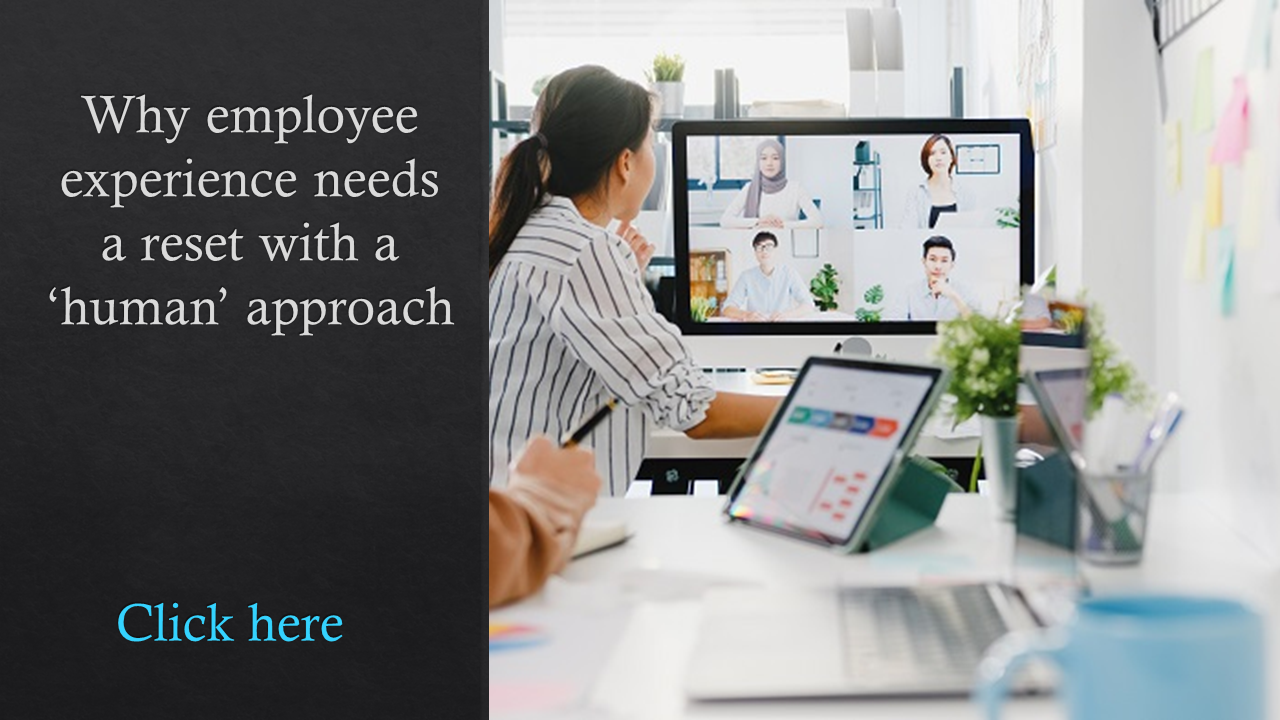Developing employees for hybrid and remote work
In my column last month, I wrote about how hybrid and remote work structures are here to stay. What 18 months ago had looked like a crisis-driven, temporary change in the way we work now appears to be here to stay—a structural change. The majority of the conversation around this change has been rather tactical, involving such things as how many days employees need to be in the office, how close they need to live to the office, or which specific days can they be remote. What’s being missed, however, is considering the second and third level order consequences of this shift.
Are you and your employees ready?
Let’s assume that we’re going to iron out all of the logistical particulars of new schedules and policies. Why am I confident that we will? HR always does well with these types of challenges. Thinking ahead, how do we ensure that employees are actually set up to succeed, realize how much they need to change, and how does the way in which we do work become altered by the place we work from?
These are all critical questions that we must dedicate deep thinking toward and encourage agile experimentation with. Employees must also realize that with the upside of having more flexibility, the comfort of working from home, less time spent commuting, and more, they will also be forced to adapt and redesign how they navigate not just the performance of their roles but also the advancement of their careers.
Development objectives for everyone
Despite our performance management processes, the vast majority of employees don’t have defined developmental objectives to anchor and focus their professional growth efforts. At best, a few performance-driven goals may be established, but not targets of how we can be better—just what we need to accomplish.

Author Ben Brooks is founder and CEO of PILOT.
So that’s why I definitely suggest that you lean into a shared developmental plan that is focused around the fundamental—even obvious—competencies that are necessary for succeeding in hybrid and remote work, even if you’re in the office five days a week. Here are the top five areas that my team at PILOT has identified as being critical for employees at all levels and roles to develop, in order to feel powerful at work.
Elevate our self- and situation-awareness
As the pace of change continues to accelerate, we must keep a finger on the pulse of how we, and the conditions we work in, are evolving. This can be particularly challenging for mid- and late-career employees or long-tenured staff who might not have experienced such rapid changes in a long time. Self-awareness comes from reflecting, looking inward, finding distraction-free solitude and taking our own proverbial temperature. As a coach, I view this as a powerful super-competency.
Additionally, all employees must supplement their own reflection with an outside perspective in the form of feedback that we actively solicit and process. The feedback must come from multiple sources—not just our managers—and should include awareness of the context for our work. How have market conditions, competition, technology, talent, cultural changes, regulatory matters, or anything else impacted how we work?
Advocating for ourselves
 Seldom are we told that we are our own agent, that we have by far the best information about what we want or need, or that it is our responsibility to give voice to those things and not assume that others can simply read our minds. Self-advocacy has been shown to be a major driver in career satisfaction, wellbeing, and even advancement within an organization.
Seldom are we told that we are our own agent, that we have by far the best information about what we want or need, or that it is our responsibility to give voice to those things and not assume that others can simply read our minds. Self-advocacy has been shown to be a major driver in career satisfaction, wellbeing, and even advancement within an organization.
In a work environment where we are more disconnected than ever, employees must massively uplevel their already generally inadequate levels of advocacy with their managers, colleagues, clients and—often most difficult—with themselves. The foundations of healthy practices one might learn in therapy, such as setting boundaries, asking for what they need, or even feeling worthy of such, is the sort of work that we all must confront.
Owning our supervision
Managers were already overstretched, underdeveloped and disempowered before the pandemic. Fast forward to today, and their jobs have only gotten more difficult, requiring them to shoulder additional emotional labor from staff and being unable to rely on proximity to drive performance.
So employees have to meet their managers halfway. This looks like reframing the relationship from one of paternal-like direct supervision to more of a two-way partnership, in which employees initiate one-on-ones, invest in the relationship, push status to their managers, ask for help when they’re struggling, and seek to lean into their managers’ work preferences.
Investing in relationships
 If you’ve worked at an office, then you already know that magical feeling you get from serendipitously running into someone in the cafeteria, elevator bank, parking lot, or even the pantry. It’s a great way for us to catch up about our personal lives, remind us of people we need to meet with, and feel a sense of connectedness. But many of the employees who’ve shifted to hybrid or remote work are now relying simply on their calendar, email inbox or collaboration tools such as Teams or Slack to stay connected. And while these tools do a decent job of transactionally helping get work done, they are inadequate for forming and sustaining the kinds of human relationships that are so critical not only to effective teams, but also to employees simply enjoying being at work and feeling that they belong.
If you’ve worked at an office, then you already know that magical feeling you get from serendipitously running into someone in the cafeteria, elevator bank, parking lot, or even the pantry. It’s a great way for us to catch up about our personal lives, remind us of people we need to meet with, and feel a sense of connectedness. But many of the employees who’ve shifted to hybrid or remote work are now relying simply on their calendar, email inbox or collaboration tools such as Teams or Slack to stay connected. And while these tools do a decent job of transactionally helping get work done, they are inadequate for forming and sustaining the kinds of human relationships that are so critical not only to effective teams, but also to employees simply enjoying being at work and feeling that they belong.
Employees must dedicate time and focus to be proactive in reaching out to colleagues, initiating visits—whether physical or virtual—conversing beyond tactical work and revealing more about who they are beyond the confines of their day job. This is something that most people aren’t used to doing virtually, and social media has often taught us bad habits like projecting perfection (*cough cough* Instagram) or getting into rage-filled debates with strangers. We must find new ways to connect as humans, even if we’re not co-located.
Being self-directed
The motivation, accountability and resource richness of congregate work environments is powerful, and anyone who’s ever transitioned to independent consulting or freelance work from home or a coffee shop knows how painful it can be to insource so much of that daily structure and drive. This is something I learned for myself firsthand when I left the corporate world, and it caused me to change how I spent my Sunday nights, what time I got up, and how I started my day. All of a sudden I had to set my own priorities, hold myself accountable, know when to ask for help, soothe myself when the road got bumpy, and celebrate when I succeeded.
That’s the kind of steep learning curve that we must all embrace, learning to take increasingly more responsibility for our own supervision, for our own career journeys, and even for our daily sense of direction, focus and purpose.
Let’s do this
What I’ve just shared with you here is a non-exhaustive but fundamental and powerful list of development objectives that any individual and organization could benefit from in 2022. Insights from a column like this are great, but putting them into action—that’s transformative.
What if you picked even just one of these and set it as a developmental objective for yourself next year? And why not stop there! Enroll your colleagues or team to take it on with you, or even invite your executive team to commit to it and cascade it throughout the organization. Just imagine how much more functional we could be if all of our employees in 2022 committed to growing together!